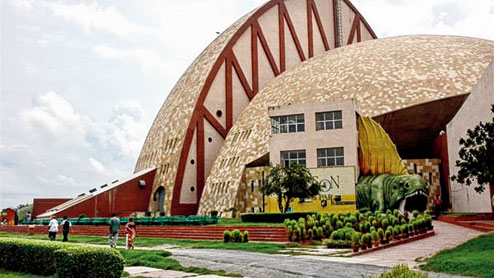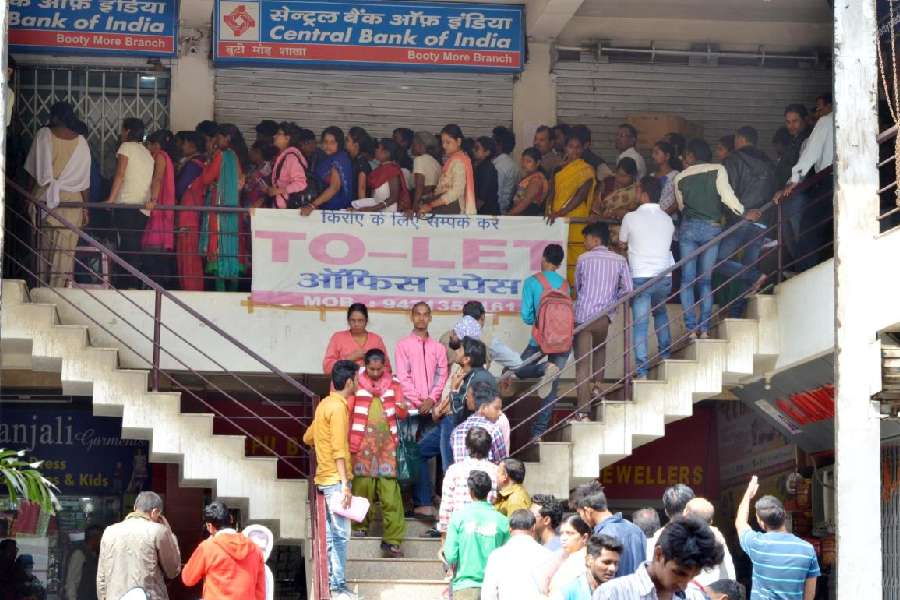

Sanjoy Chattopadhyaya)
Calcutta: The Space Theatre at Science City, one of its more popular attractions, is switching from 2D analogue to 3D digital as part of an upgrade that promises to scale up the viewing experience in terms of both content and technical quality.
The theatre, which has remained shut since March 1, will have a new screen, six projectors in place of the old standalone projection system and improved sound. "The viewing experience is hopefully going to be better than in multiplexes," said Arijit Dutta Choudhury, the director of Science City. "We had been running content in the analogue format for 20 years. The rest of the world has long switched to digital and this upgrade was overdue."
The dome of India's first Space Theatre had been inaugurated along with the rest of Science City on July 1, 1997.
The first film to be screened was Serengeti, which documents the journey of more than two million wildebeests, zebras and antelopes over 500 miles across the Serengeti plains in Tanzania. In the analogue format, resolution was at best passable and poor compared to what even basic projection systems now provide.
Post-revamp, the latest digital content can be screened in ultra high definition and also in 3D, giving viewers the feel of "being there". Science City is looking to reopen the new-look theatre next April. Metro highlights what's changing and why.
Content challenge
Science City buys most of its Space Theatre content from companies such as US-based MacGillivray Freeman Films that is among the top producers and distributors of 70mm films, including 40 for IMAX. "These companies have long stopped making films in the analogue format. For a few clients like us, they have to convert a digital film to analogue so that it can be used for celluloid-based projection," Dutta Choudhury said.
The quality of a converted film is far inferior to the original. It is like taking a printout of a picture, scanning the image and then making another copy of the scanned print. The second print would invariably look faded, said a worker who has been handling the projection system at the theatre for years.
The old system used celluloid films - the width of the film is 70mm and there are 10 perforations on each slide. Scratches are inevitable when the films came into contact with dust and metal particles. These scratches cause streaks on the screen in the middle of a film, much like those you see on television when old films are telecast.
Upgrade process
Science City, which operates under the National Council of Science Museums, had sent its proposal for an upgrade to the Union ministry of culture in September 2015. The approval came in March 2016 but it took almost a year for the contract to be awarded to Carl Zeiss AG, the pioneering German manufacturer of optical systems. Carl Zeiss has been given a budget of around Rs 20 crore for the upgrade.
New-age projection
The original projection system installed in the Space Theatre came from Goto Inc, the Japanese manufacturer of planetarium equipment and telescopes. The projector, which cost more than Rs 3 crore in 1997, served the theatre well but the ravages of two decades of use had begun to tell. Some fungal growth on the lens worsened the viewing experience.
The six new projectors that will replace the old system have been procured from Christie, the US-based manufacturer of projectors and digital cinema devices. The projectors have a top-end resolution of 6.5K, meaning there will be 6,500 pixels (approximately) across the screen. Advertisements for "Ultra High Definition TVs" flaunt 4K resolution, currently the highest resolution standard for televisions.
Each of the projector coming to the Space Theatre costs around Rs 1 crore. The images from six projectors will be stitched together and blended with the help of software.
Real 3D screen
The old dome-shaped screen, 23 metres in diameter, had been made locally at a cost of around Rs 20 lakh. "Because of its shape and the fact that the films we used to screen contained mostly aerial shots, viewers had an immersive experience and often mistook it for 3D," Dutta Choudhury said. The new one will be real 3D. US-based Astro-Tec Manufacturing has been paid around Rs 4 crore to create a custom dome-shaped screen for the theatre with seamless joints.
Surround sound
Normal stereo sound through four speakers is being replaced with 7.1 surround sound, matching the best theatre experience. The seats will have more leg space and better reclining ability. The seating capacity of 360 remains unchanged.










